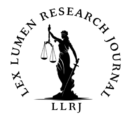Written by Mansa Kumaran,
PES University
December 2024
BACKGROUND:
The Ram Mandir agitation was a political and religious campaign that aimed to construct a temple dedicated to lord Rama at the location of the Babri Masjid in Ayodhya. The Indian Parliament led by the then PM P.V. Narasimha Rao passed the Places of Worship Act 1991, which directed the course Indian history.
In the 16th century, Babri Masjid was built on the remains of a Hindu temple dedicated to lord Rama’s birthplace which led the main argument at the core of the campaign.
As the agitation grew intensely in the late 1980s and early 1990s, it generated violent incidents and tensions amongst communities throughout the country. A number of significant events that took place were: –
- In 1984, The Vishva Hindu Parishad (VHP) started a brick-gathering effort to build the Ram mandir using bricks from all over India.
- In 1986, a local court decided to open the Babri Masjid’s gates so that Hindus may pray inside, the conflict grew more intense.
- In 1989, the VHP held a shilanyas (foundation-laying) ceremony, which the Bharatiya Janata Party (BJP) used for their political objective.
- On December 6, 1992, a significant number of kar sevaks (volunteers) gathered at the location and, despite the presence of security personnel, demolished the Babri Masjid. This incident gave way to the communal violence that claimed over 2000 lives and brought about political crisis. The Babri Masjid demolition led to criticism of the ruling party, prompting President’s rule in several states and arrest of BJP and VHP leaders for incitement. Despite the violence, the government sought a peaceful resolution to the Ram Mandir issue. More than a year before the Babri Masjid was demolished, in September 1991 the Places of Worship Act, 1991 was passed for preserving the sacred locations’ original status quo on August 15th 1947, except in the situations that were already ongoing in the court, like the Ram Janmabhoomi-Babri Masjid controversy. The Act specifically prohibited any conversion or evolution of the religious nature of such locations and restricted judicial procedures concerning their conversion before the previous date[1]
CHALLENGES:
The Place of Worship Act, which was enacted in 1991, sought to provide religious Places of Worship a regulatory structure that acknowledged their circumstances on August 15TH 1947, the day India gained its freedom. Though aim was to preserve the religious significance of the places, it has been under intensive investigations and disagreements since it was passed.
The Place of Worship Act of 1991 contains multiple legal implications and prompt a lot of discussion, it also obstructs fundamental aspect of constitutional governance through limitations on judicial review, denying harmed parties the chance to purse the legal action. As mentioned, before the Place of Worship Act 1991 was established on August 15th 1947, it was enabled for assessing the status of religious places that raises concerns about its applicability and justice, which overlooks the complex historical and social factors which could lead to inconsistent implementation.
Within the political sphere, the Place of Worship Act 1991 has been the subject of intense discussions with critics arguing that it lacks logic and is unconstitutional. They believe that this Act violates the principle of equality and secularism which was established by the Indian Constitution and is now showing a preference for a particular religious community over another. These claims reflect more general worries about how the Act would heighten tensions between communities and threaten interfaith peace.
The Place of Worship Act 1991 has significant implications for the rights and relationship of religious communities in the larger social environment. Its narrow focus is on preserving religious places, which in present is being overlooked as to how these religious practices and identities are changing in modern day India. Furthermore, the Act can accidentally fuel existing tensions and disputes amongst various religious groups by preventing divisive matters including religious conversions, repairs or renovations.
The Act, which aims at preserving secular values and unity among people, has come under fire, for failing to effectively deal with interfaith tolerance and understanding by emphasizing its shortcomings in a growing diverse and pluralistic society.
The Place of Worship Act of 1991 intended to protect India’s religious legacy, but because of legal, social and political implications, its implementation has proven controversial and to solve this, India requires broad initiatives and advanced discourses to respect the concepts of democracy, pluralism and secularism while resolving conflicting interests and values.
DETAILS
Religious institutions of Sikhism, Buddhism, Jainism, and Hinduism filed a writ petition challenging the validity of an Act as it violates the fundamental rights and secular values incorporated within the Indian Constitution. The Act, according to them, applies an arbitrary date, which is August 15, 1947, whereby it disallows judicial review in regard to conversions or renovation of religious properties that were conducted prior to the said date. They claim this violates justice by neglecting past injustice and hinders holy places. They further argue against the Act for exempting the Ram Mandir issue from its jurisdiction, thus making a case of equity in religious conflict management.
Petitioners allege the Act violates their right to judicial review, an essential tenet of the role of the judiciary in upholding rule of law and fundamental rights. It is further argued that the Act impacts minority rights to religious practice and perpetuates historical injustices by preserving the status of religious sites under 1947, thereby imperilling India’s secular character.
On the other hand, Jamiat Ulema-I-Hind has filed a different petition supporting the enforcement of the Act to protect the religious nature of mosques and other sites, urging punishment for those inciting communal discord. The Centre has drawn much criticism for delaying its counter-affidavit, though the Supreme Court has clarified that the Act remains in force till a decision is given.
PENDING CASES:
There are numerous of cases are pending in front of different courts of India, disputing the character of religious places, in spite of offering protection by the Places of Worship [Special Provision] Act 1991. Some of them are mentioned below: –
Petition filed against Taj Mahal
In 2022, a writ petition was filed in the Allahabad High Court, arguing that Taj Mahal was originally a Hindu temple called ‘Tejo Mahalaya.’ A committee was sought to inquire into the true history of the monument. However, the High Court dismissed the petition and also the case when it reached the Supreme Court level, declaring it “publicity interest litigation,” which really means publicity instead of taking a grave issue of law very seriously.[2]
Jama Masjid and Dargah of Shaikh Salim Chishti at Fatehpur Sikri
This year, a court in Agra received cases claiming that the Sheikh Salim Chishti Dargah was originally a temple and that an idol of Lord Krishna is buried at Jama Masjid. Notices were sent to the UP Sunni Central Waqf Board and the management of both sites regarding these claims.
Shahi Idagah Mosque
A Hindu organisation filed a petition in February 2023, and the Mathura district court accepted it. The Action sought the demolition of the Shahi Idgah mosque, which is next to the Krishna Janmabhoomi temple, and the land was returned return to the Hindus. The lawsuit said that a temple that served as Lord Krishna’s birthplace was demolished to construct the mosque. The Mathura court proceedings were put on hold in April 2023 when the mosque committee challenged the suit at the Allahabad High Court. The mosque committee further claimed that the lawsuit was legally prohibited by using the Places of Worship Act, 1991.[3]
CONCLUSION:
The Places of Worship Act, 1991, is an act that was made to preserve the religious character of places of worship as they existed on August 15, 1947, in order to protect India’s secular fabric and prevent interfaith conflicts. However, it has been criticized for imposing an arbitrary date, denying judicial review, and ignoring historical injustices. Critics argue that the Act violates fundamental rights, undermines secularism, and creates inequities by not allowing religious groups to redress past grievances. The proponents, such as Jamiat Ulema-I-Hind, argue that it protects the religious places and prevents communal disharmony. However, the present disputes, like the Taj Mahal and Shahi Idgah Mosque cases, reflect the limitations of the Act in dealing with the historical issues and changing religious practices.
While the intention behind the Act is a unitary one, its harsh provisions raise questions about its current utility in modern India. Addressing these issues necessarily requires open dialogue and balanced applications in ensuring constitutionalism coupled with social harmony.
Drishti IAS (2023) The places of Worship Act, 1991, Drishti IAS. Available at: https://www.drishtiias.com/daily-updates/daily-news-analysis/the-places-of-worship-act-1991 (Accessed: 03 December 2024).
[2] Network, L.N. (2022) ‘Publicity Interest Litigation’: Supreme Court dismisses plea to ascertain ‘real history’ of Taj Mahal, Live Law. Available at: https://www.livelaw.in/top-stories/publicity-interest-litigation-supreme-court-dismisses-plea-to-ascertain-real-history-of-taj-mahal-212243 (Accessed: 03 December 2024).
[3] Places of worship act and ongoing disputes: Explained (2024) Civils Daily. Available at: https://www.civilsdaily.com/news/places-of-worship-act-and-ongoing-disputes-explained/ (Accessed: 03 December 2024).


